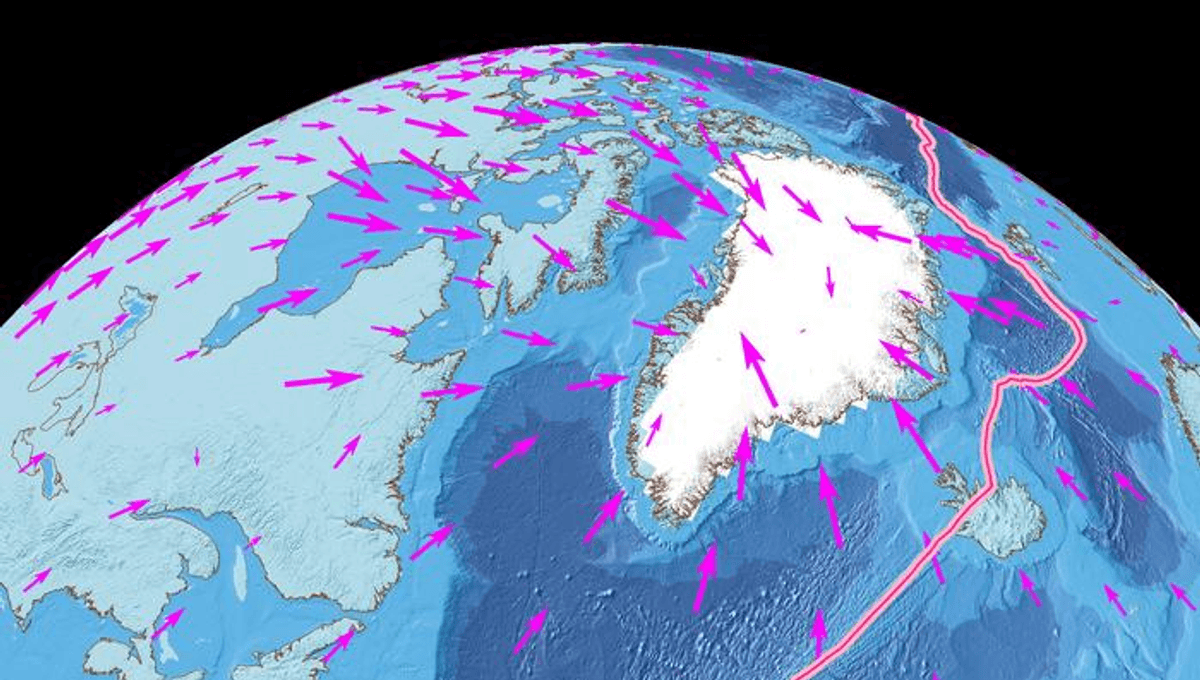
The Atlantic Ocean has been widening for hundreds of millions of years, but its growth may have briefly gone into overdrive thanks to the melting of glaciers as the last Ice Age came to an end. Moreover, the processes involved may have also caused up uptick in volcanic eruptions, with implications for the melting we are inducing today.
Around 26,000 years ago, the Earth hit last glacial maximum, with ice sheets a mile thick where some of North America’s great cities now stand. When these melted, the oceans rose rapidly. The North American continent rebounded from having been forced down by all that weight, but according to a computer simulation of the world at that time, the changing climate also induced sideways movement, albeit with some delay.
The widening of the Atlantic Ocean is a product of new oceanic crust being formed at the Mid-Atlantic Ridge. University of Colorado at Boulder graduate student Tao Yuan and Professor Shijie Zhong claim this production increased by up to 40 percent between 12,000 and 6,000 years ago, compared to the rate beforehand.
“As ice volume was greatly reduced, it caused a huge motion in Earth’s crust,” Yuan said in a statement. “Scientists knew that the ice melting caused the plates to uplift. But we show that they also moved a lot horizontally due to the ice melting.”
“That story that we’ve been telling for a long, long time—that processes like seafloor spreading and continental drift operate at timescales of millions of years driven by Earth’s internal engine, thermal convection,” said Zhong. “That’s still true, but we show that glacial forcing can also cause significant motion on relatively short timescales of 10,000 years.”
We can estimate the rate of spreading by measuring the amount of crust created between times when the Earth’s magnetic poles flip, since the direction of the geomagnetic field is incorporated in the basalt. According to Zhong, the textbook number is 2 centimeters (0.8 inches) a year. That’s correct on average, Yuan and Zhong think, but the assumption that the speed is fairly constant may not be so reliable.
Computer models the pair made indicated that a weight shift, such as would be produced by the loss of trillions of tons of ice, would have caused the North American plate to rotate clockwise, reflecting the uneven distribution of ice. This would then have amplified crust production at the ridge, and therefore the expansion of the continents. The authors compare this to what happens to a memory foam mattress after you get up.
At this stage, the conclusions are largely based on modeling, which means they are vulnerable to the possibility that Yuan and Zhong left something important out. This is not an area where verifying the output against experiments is easy. However, the pair note that Iceland’s volcanic activity became even more intense between 10,000 and 7,000 years ago before moderating again. Since Iceland is part of the mid-Atlantic ridge system, this is consistent with their model’s predictions.
If Icelandic activity was connected to ice sheet melting, that could be one of the more important implications of the work for the current circumstances.
Eruptions at oceanic ridges don’t affect us directly, and most people probably don’t care too much if their trip from London to New York has to go an extra few centimeters because of accelerated continental drift.
On the other hand, if the current melting of Greenland, just 300 kilometers (180 miles) from Iceland, supercharges the island’s volcanoes, it’s a different matter. The Icelandic population is so tiny that it might be considered the safest place, after Antarctica, for an upsurge of volcanic activity. However, Eyjafjallajökull’s 2010 eruption shut down airline flights across Europe, and sometimes into the rest of the world, so the consequences could be more extensive.
“We think the ice melting could enhance seafloor spreading and volcanism at nearby mid-ocean ridges in the future,” Yuan said, but the pair also expect it may take centuries of melting before volcanic effects are experienced.
At this stage, Yuan and Zhong’s expectations of the impact of modern climate change are still tentative. Nevertheless, if it feels like America is pulling away from Europe, it may be literally true.
The study is published in Nature.
Source Link: Melting Ice Age Glaciers May Have Sped Up Continental Movement And Increased Volcanic Activity